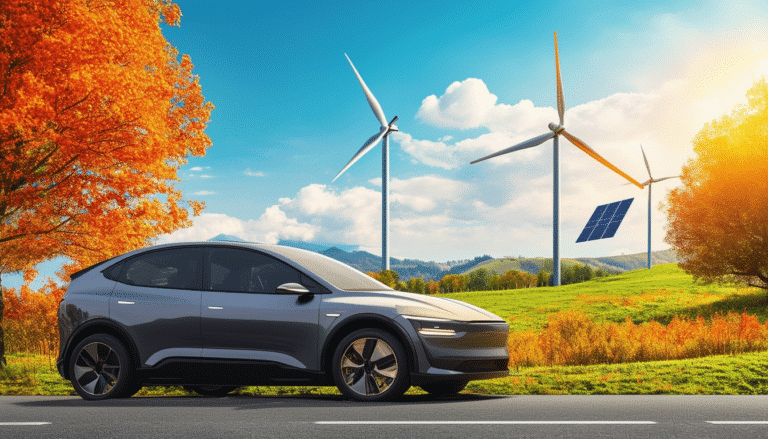This innovative engine rotates on its own axis and uses water as fuel: the future of humanity is here

In a world in full transition towards cleaner energies, a revolutionary engine bursts onto the automotive scene, promising to change the course towards a sustainable future. This innovative device not only challenges current norms but also employs water instead of traditional fossil fuels, symbolizing an unprecedented transformation in the way vehicular propulsion is conceived. The use of hydrogen as an energy source, with virtually zero emissions, places this technology at the forefront of the race towards a greener and more hopeful planet.
In a remarkable advance towards reducing harmful emissions, a revolutionary engine has emerged that promises to change the paradigm of transportation. This engine not only uses hydrogen as an energy source but operates in a unique way by rotating on its own axis, offering a potentially transformative solution for future vehicles. Developed by Astron Aerospace under the name Omega 1, this innovative system presents features that position it as the possible answer to the urgent need for decarbonization.
The need for sustainable innovations
The world faces a critical moment where abandoning fossil fuels becomes essential. The environmental impact of these fuels has made the search for more sustainable alternatives a global imperative. In this context, hydrogen emerges as a key resource for ecological transformation, attracting scientists, entrepreneurs, and politicians interested in finding solutions that drastically reduce the carbon footprint.
An engine that redefines the future
The Omega 1, created by Astron Aerospace, is an engine that uses hydrogen, producing emissions close to zero. Its design is revolutionary; it does not rely on traditional engines or the well-known Wankel turbines like those from Mazda. This engine consists of two pairs of rotors that spin in opposite directions, maximizing efficiency and minimizing friction losses, a common problem in conventional piston engines. The high power-to-weight ratio of the Omega 1 suggests its potential application in a wide range of vehicles, from cars to planes.
Hydrogen as an energy source
The use of hydrogen as fuel is not new, but it has never been as urgent. Its production through electrolysis allows obtaining hydrogen by breaking water down into oxygen and hydrogen, generating only water as a byproduct. While natural gas reforming remains common, electrolysis represents a more ecological alternative, breaking away from techniques that emit CO2.
The Omega 1, operating with hydrogen, offers a promise of radical change without the harmful emissions associated with fossil fuels, challenging the industry to adopt cleaner and more efficient technologies.
A potential impact on the automotive industry
With its capability to produce up to 160 HP and a weight of only 15.9 kilograms, the Omega 1 challenges the known, eliminating complex elements such as eccentric shafts or crankshafts and transmitting power directly. This simplification of design not only improves efficiency but also aims to reduce costs and weight compared to traditional engines.
Competition in the face of a new challenge
By challenging expectations with an engine capable of rotating on its own axis and operating with hydrogen, the Omega 1 forces the competition to rethink its approaches. This technology offers a viable alternative not only to internal combustion engines but also to electric vehicles, as is already being discussed on various industry platforms.
Recently, the motor world has seen how Mazda has continued exploring with innovative engines, and other manufacturers are being closely watched as they adapt to this technological revolution.
Conclusion: A destination towards sustainability
The Omega 1 from Astron Aerospace marks a bold step towards a future where sustainability is not just an option but an unavoidable necessity. Its focus on minimizing waste, along with its simplified and efficient design, offers an exciting glimpse into what could be the standard in a post-fossil fuel world.
As part of this ongoing technological advancement, we recommend motorists explore ways to improve the efficiency of their current engines, as described in these suggestions.
The Path Towards a Sustainable Future
In an increasingly concerned world about the consequences of climate change, the development of innovative technologies like the engine that rotates on its own axis and uses water as fuel represents a beacon of hope. As humanity enters an era where the reduction of carbon emissions is paramount, the search for sustainable alternatives has become an imperative. This engine not only opens the door to new possibilities but also challenges the dependence on fossil fuels that has prevailed for over a century.
The use of hydrogen as fuel is undoubtedly one of the most promising solutions to address contemporary environmental issues. The simplicity and efficiency of this type of engine, which virtually eliminates polluting emissions, signals a significant change in the right direction. The revolution of a rotary engine that employs water instead of gasoline highlights the incredible capability of human ingenuity to adapt and overcome seemingly insurmountable obstacles.
The proposal of Astron Aerospace with its innovative Omega 1 engine goes beyond merely offering an alternative to conventional engines. It is about redefining the concept of mobility and the means by which true sustainability will be achieved in the future. This advancement serves as a constant reminder that, with dedication and creativity, it is possible to develop technologies that not only preserve our environment but also raise the standards of efficiency and performance.
As we move towards a sustainable future, the development and implementation of engines like the Omega 1 should not be mere options but an integral part of our collective efforts to protect the planet. These innovative steps not only represent a triumph of engineering but also a significant victory for humanity as a whole in its quest for a balance between technological progress and environmental conservation.






